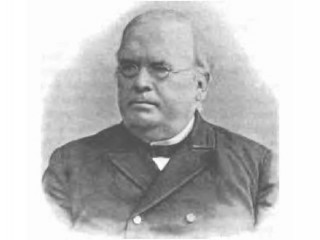
Johann Wilhelm Hittorf biography
Date of birth : 1824-03-27
Date of death : 1914-11-28
Birthplace : Bonn, Germany
Nationality : German
Category : Science and Technology
Last modified : 2010-05-27
Credited as : Physicist, ion transport numbers, electrochemical reactions
0 votes so far
He observed tubes with energy rays extending from a negative electrode. These rays produced a fluorescence when they hit the glass walls of the tubes. In 1876 the effect was named "cathode rays" by Eugen Goldstein.
Johann Wilhelm Hittorf, German physicist who first computed the electricity-carrying capacity of charged atoms and molecules (ions), an important factor in understanding electrochemical reactions. He formulated ion transport numbers and the first method for their measurements. He discovered the cathode rays (electron rays), and made valuable investigations concerning electric phenomena in vacuum tubes and contributions to the theory of ions.
Hittorf’s early investigations were on the allotropes (different physical forms) of phosphorus and selenium. Between 1853 and 1859 his most important work was on ion movement caused by electric current. In 1853 Hittorf pointed out that some ions traveled more rapidly than others. This observation led to the concept of transport number, the rate at which particular ions carried the electric current. He measured the changes in the concentration of electrolyzed solutions, computed from these the transport numbers (relative carrying capacities) of many ions, and, in 1869, published his laws governing the migration of ions.
He became professor of physics and chemistry at the University of Munster and director of laboratories there from 1879 until 1889. He also investigated the light spectra of gases and vapours, worked on the passage of electricity through gases, and discovered new properties of cathode rays (electron rays). In 1869 he ascertained that the cathode rays propagated in straight lines (when there was no magnetic field of course) He noticed that when there was any object placed between the cathode and the illuminating side of the tube, then the shadow of that object appeared.
His work led more toward the development of X-rays and CRT’s, the measurement of current in a vacuum tube was an important step towards the creation of a vacuum tube diode.
Crookes-Hittorf Tube (William Crookes – Developed a better vacuum pump that allowed him to produce cathode-ray tubes with a smaller residual gas pressure.)
















